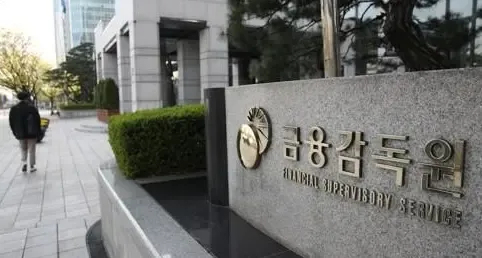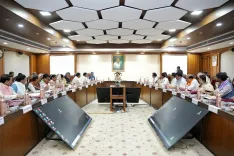What is the Impact of Muthoot Finance's Gold Loan NPAs at Rs 3,369 Crore and Manappuram Finance's Rs 436 Crore?

Synopsis
Key Takeaways
- Muthoot Finance leads with NPAs of Rs 3,369 crore.
- Overall NPAs for gold loans from NBFCs reached Rs 4,470 crore.
- The RBI has mandated a review of practices around gold loans.
- Inadequate monitoring and appraisal practices were identified as key issues.
- Banks are tightening policies and processes to enhance transparency.
New Delhi, July 29 (NationPress) The total gross NPAs for gold loans issued by NBFCs in India have surged to Rs 4,470 crore as of March 31, 2025, compared to Rs 3,634 crore in the previous year. In contrast, commercial banks report their NPAs at Rs 2,162 crore, up from Rs 1,513 crore as of March 31, 2024, as shared in Parliament on Tuesday.
Data indicates that Muthoot Finance Ltd is responsible for a staggering Rs 3,369 crore of NPAs by March 31, 2025. Meanwhile, Manappuram Finance remains in second place, accumulating gross NPAs of Rs 436 crore, according to Pankaj Chaudhary, Minister of State for Finance, who presented these figures in the Rajya Sabha.
When examining bank NPAs related to gold loans, private sector lender ICICI Bank leads with Rs 452 crore. Following this is Union Bank of India with NPAs of Rs 155 crore, and SBI, the largest bank in India, showing NPAs of Rs 154 crore for gold-backed loans as of March 31, 2025.
The minister also noted that the Reserve Bank of India (RBI) has conducted a thorough review of compliance with prudential guidelines related to loans against gold ornaments and jewellery.
This review, along with findings from onsite examinations of select Supervised Entities (SEs) by the RBI, revealed multiple irregularities in this sector. Key deficiencies included the misuse of third-party services for loan sourcing and appraisal, gold valuation without customer presence, inadequate due diligence, and insufficient monitoring of gold loan usage.
Moreover, the RBI identified a lack of transparency during the auctioning of gold items upon customer default, weaknesses in Loan-to-Value (LTV) monitoring, and incorrect risk-weight applications.
The minister further mentioned that the RBI issued a directive on September 9, 2024, concerning “Gold loans - Irregular practices observed in grant of loans against pledge of gold ornaments and jewellery.” This urged NBFCs and banks to thoroughly examine their policies and practices concerning gold loans to pinpoint and rectify identified gaps.
In response, banks and NBFCs have submitted Action Taken Reports (ATR) to the RBI, showcasing efforts to fortify systems and procedures for granting loans against gold.
As part of these efforts, banks have reviewed their practices to recognize gaps noted in the RBI circular. Additionally, they have enhanced the monitoring processes for LTV limits and any breaches. In instances of LTV breaches, banks follow up for repayment, and if necessary, initiate auction processes for overdue recoveries.
Furthermore, banks have strengthened the criteria for ensuring the end-use of agricultural gold loans by tightening the documentation requirements.
To mitigate risks, banks have implemented systems to track the evergreening of gold loans, employing offsite monitoring to identify loans that close shortly after approval. They have also refined internal checks to prevent unauthorized closure of gold loan accounts. The standards for gold loan appraisal and auctions have been reassessed, and the scope of internal audits has expanded to better address risks within gold loan branches, as noted by the minister.









